Post by krash on Nov 9, 2013 12:03:02 GMT -5
A brief overview of US postal Proofs & Essays.
I want you know that I am no expert in this field but I am a collector of proofs. I was asked to put together a post that describes and outlines what proofs are so here we are.I'm just going to start typing and see what falls out of my head so it might get bumpy for a stretch! Buckle up and off we go. -
Proofs exist in a lot of different forms. Such as the large die proofs, the small die proofs, Proofs on India paper or "bible-paper", proofs on card, trial color proofs and a few more that currently escape my swiss-cheese memory at the moment! Before all those there must be essays. The essays are nothing more than a proof of a submitted design. If the postal system decides that it needs a new denomination it will take submissions from the different stamp and currency designers such as The Bureau of printing and engraving, Philadelphia banknote co, Continental banknote co., American banknote co...the list goes on...and on! But the companies all have the same motive which is to land the contract with the then US Govt. They will get their best designers to do sketches and watercolors of proposed designs and put the best ones together to make up a newly designed postage stamp!
There is no one person that does any one full design. There are an army of different people designated to different parts of the stamp that are their specialty like the lettering, the vignette, the frame and so on. After they compile and scrutinize all their best designs each company will submit them for approval. When a few designs are ,chosen they they then must meticulously engrave the chosen design into one, or a few (as the case may be) hardened steel plates. Again, there will be only One for each the viginette, frame, and lettering until one combination is ultimately chosen. They will make dies and print them (These rae the large die proofs) and scrutinize every last line until they are satisfied. when all the companies have done this they will send their designs to the Government for approval. Only one will prevail.
After the design is chosen from the large die proofs, then the real work begins! The final master dies can be made up and the printing of the color trial proofs begin! They start a process of "rocking in" the design in reverse into a steel plate of which will ultimately be hardened and if using the flat-plate intaglio method, then it will usually be into 4 panes of 100 each. Then loaded onto the press' and get ready to print up some proofs; the small die proofs to be exact. These are simply the approved design printed in a lot of different colors to see what works the best and/or to conform to any laws or reguilations (Universal Postal union colors). They will then print a few on a very high quality rice paper usually reserved for the printing of bibles and dictionaries (it's thin and isn't so bulky) mainly because it takes up the design very intricately and they can see it in it's entirety to be absolutely positive it's perfect. They will print a few more on card to send to all the different entities that need to approve it. It will be signed and then put to final print! we end up with these because philatelists and postal employees would liberate these from the panes with scissors and given away as gifts or sold in the stamp trade to nice folks like me...just sayin'
Now I didn't cover every different type of proof that exists obviously, but I wanted to keep this post both cohesive and to hopefully provide a small window into another collecting interest that is quite often overlooked or ignored by collectors and to me, that's a tragedy! Proofs are a wonderful way to get involved into both history and the stamp making and printing processes. It's fascinating if nothing else!
"OK, shut up Jay and lets see some pictures of this stuff man!" - I couldn't agree more! However I'll only add that both corrections and information are always encouraged and in fact welcomed!
Here are a few examples-
Essays:
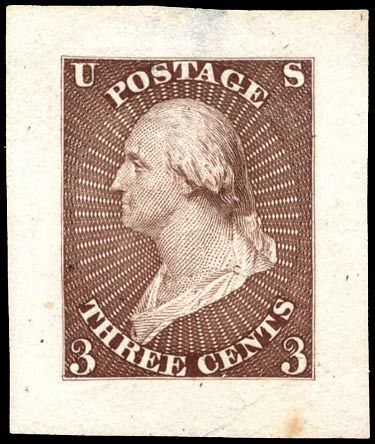
I want you know that I am no expert in this field but I am a collector of proofs. I was asked to put together a post that describes and outlines what proofs are so here we are.I'm just going to start typing and see what falls out of my head so it might get bumpy for a stretch! Buckle up and off we go. -
Proofs exist in a lot of different forms. Such as the large die proofs, the small die proofs, Proofs on India paper or "bible-paper", proofs on card, trial color proofs and a few more that currently escape my swiss-cheese memory at the moment! Before all those there must be essays. The essays are nothing more than a proof of a submitted design. If the postal system decides that it needs a new denomination it will take submissions from the different stamp and currency designers such as The Bureau of printing and engraving, Philadelphia banknote co, Continental banknote co., American banknote co...the list goes on...and on! But the companies all have the same motive which is to land the contract with the then US Govt. They will get their best designers to do sketches and watercolors of proposed designs and put the best ones together to make up a newly designed postage stamp!
There is no one person that does any one full design. There are an army of different people designated to different parts of the stamp that are their specialty like the lettering, the vignette, the frame and so on. After they compile and scrutinize all their best designs each company will submit them for approval. When a few designs are ,chosen they they then must meticulously engrave the chosen design into one, or a few (as the case may be) hardened steel plates. Again, there will be only One for each the viginette, frame, and lettering until one combination is ultimately chosen. They will make dies and print them (These rae the large die proofs) and scrutinize every last line until they are satisfied. when all the companies have done this they will send their designs to the Government for approval. Only one will prevail.
After the design is chosen from the large die proofs, then the real work begins! The final master dies can be made up and the printing of the color trial proofs begin! They start a process of "rocking in" the design in reverse into a steel plate of which will ultimately be hardened and if using the flat-plate intaglio method, then it will usually be into 4 panes of 100 each. Then loaded onto the press' and get ready to print up some proofs; the small die proofs to be exact. These are simply the approved design printed in a lot of different colors to see what works the best and/or to conform to any laws or reguilations (Universal Postal union colors). They will then print a few on a very high quality rice paper usually reserved for the printing of bibles and dictionaries (it's thin and isn't so bulky) mainly because it takes up the design very intricately and they can see it in it's entirety to be absolutely positive it's perfect. They will print a few more on card to send to all the different entities that need to approve it. It will be signed and then put to final print! we end up with these because philatelists and postal employees would liberate these from the panes with scissors and given away as gifts or sold in the stamp trade to nice folks like me...just sayin'

Now I didn't cover every different type of proof that exists obviously, but I wanted to keep this post both cohesive and to hopefully provide a small window into another collecting interest that is quite often overlooked or ignored by collectors and to me, that's a tragedy! Proofs are a wonderful way to get involved into both history and the stamp making and printing processes. It's fascinating if nothing else!
"OK, shut up Jay and lets see some pictures of this stuff man!" - I couldn't agree more! However I'll only add that both corrections and information are always encouraged and in fact welcomed!
Here are a few examples-
Essays:





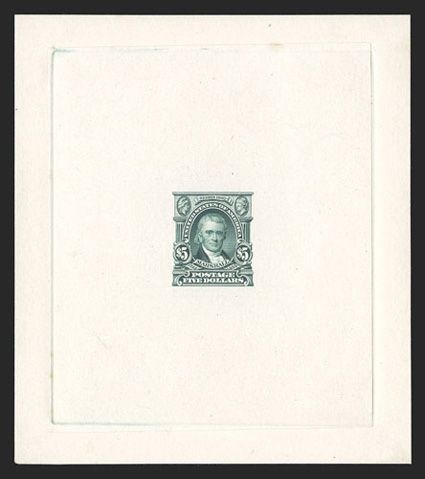
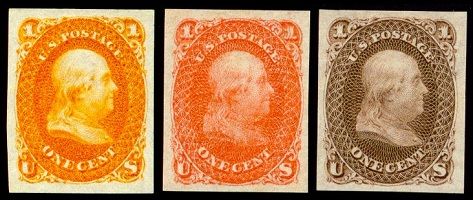
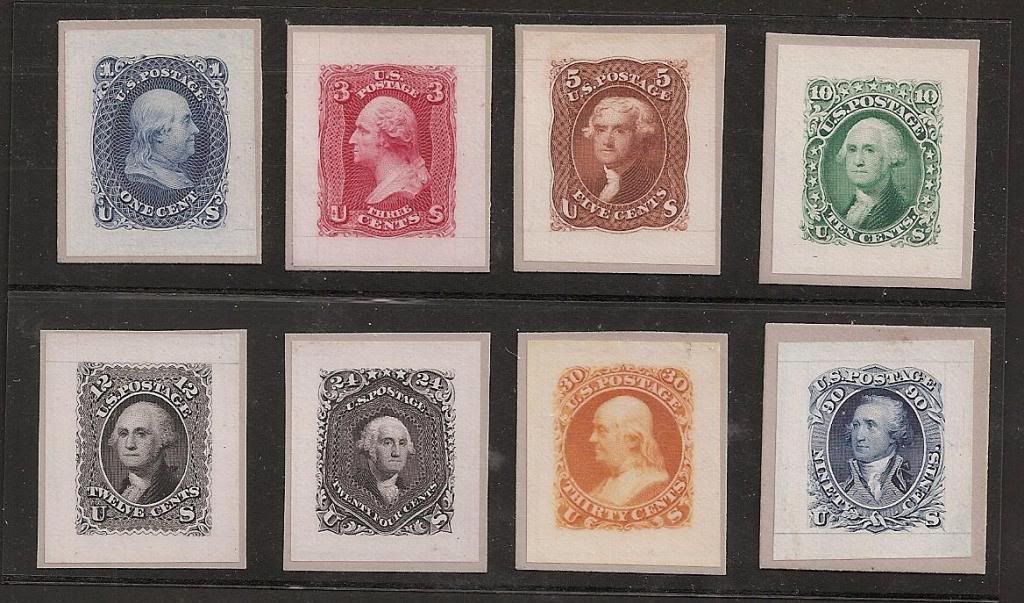

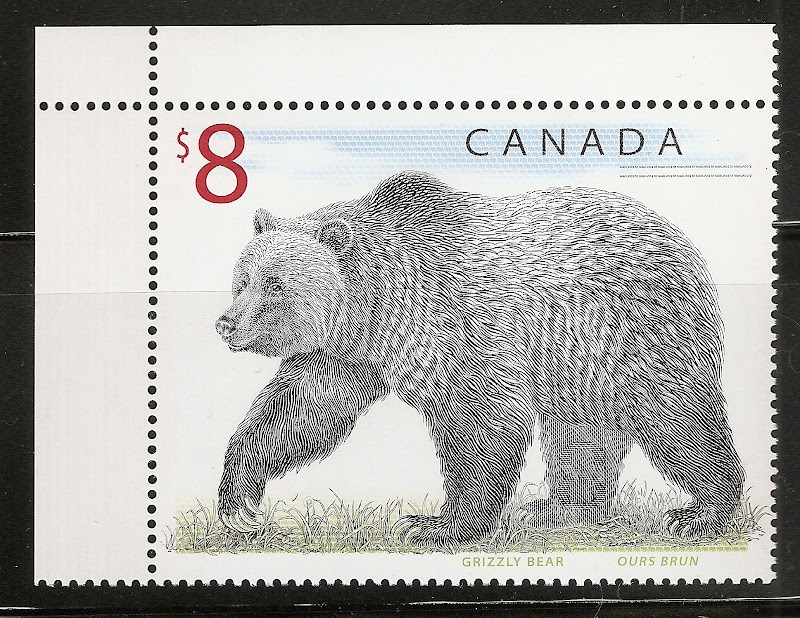


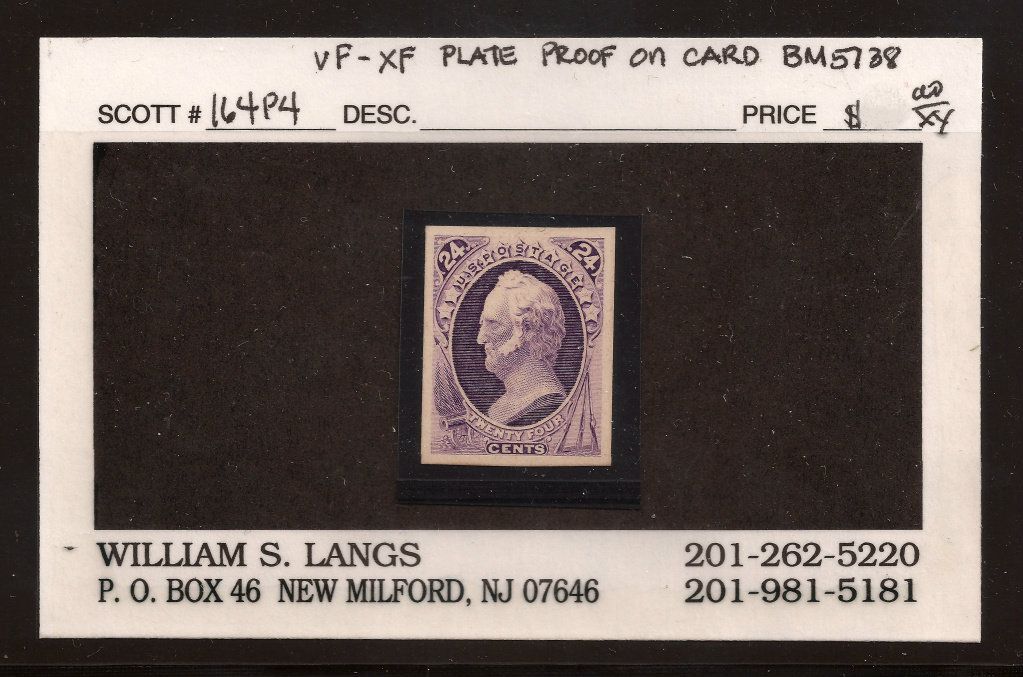

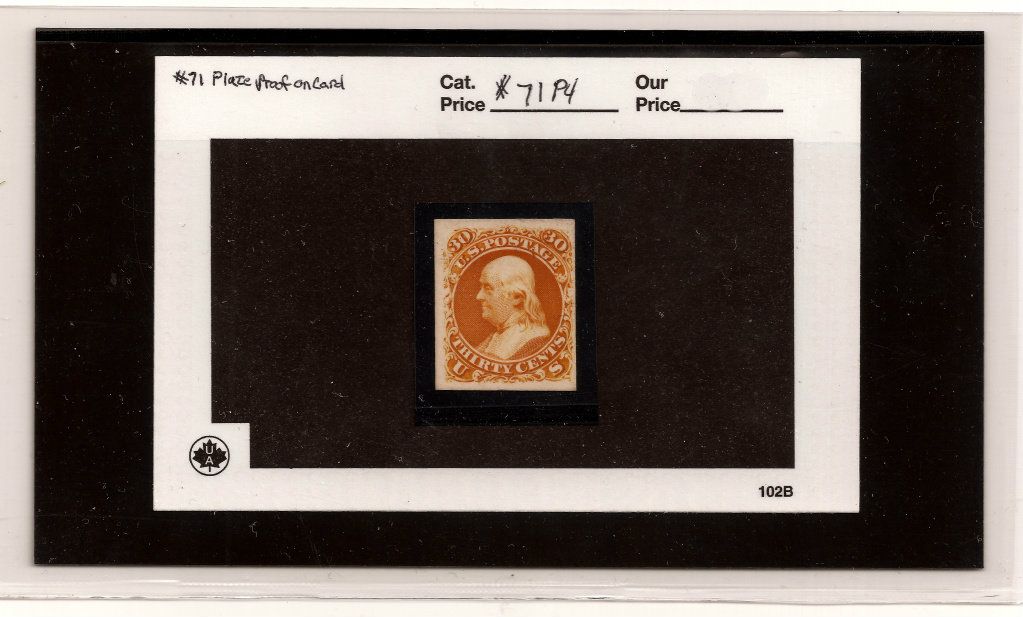

 ......Hm
......Hm  ....
....